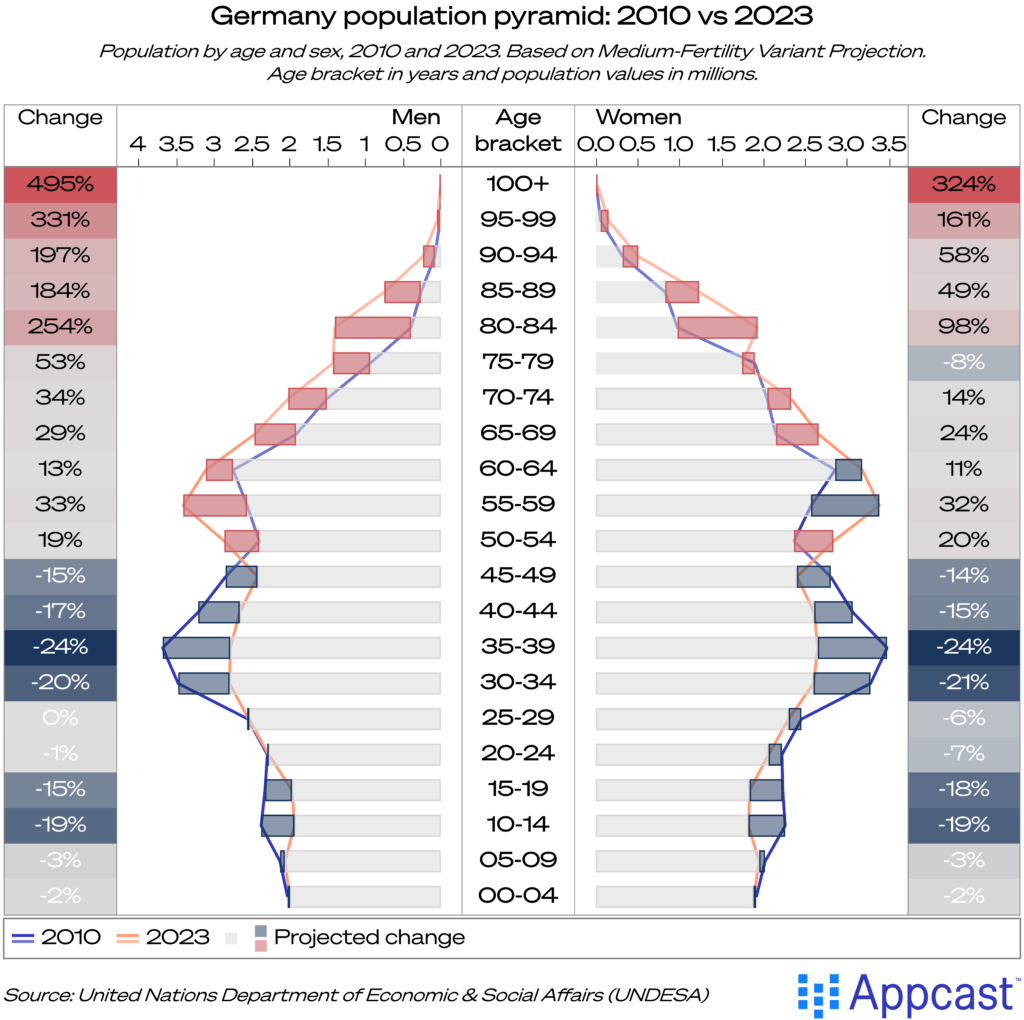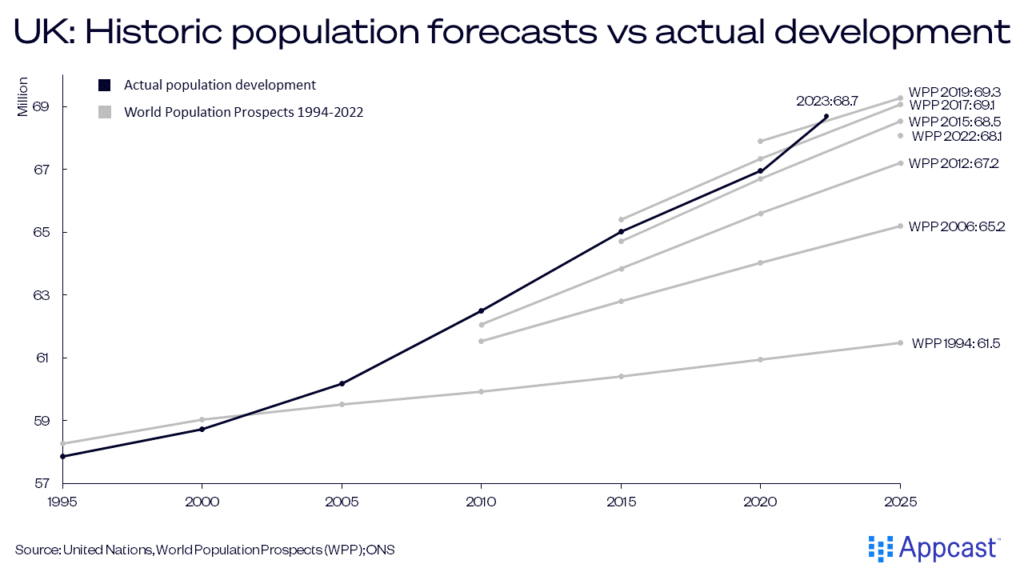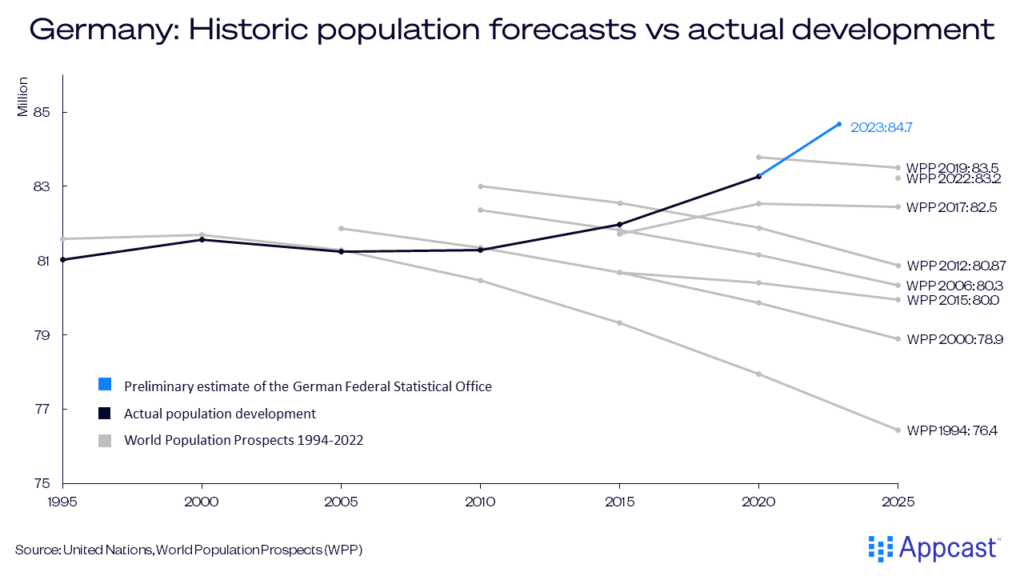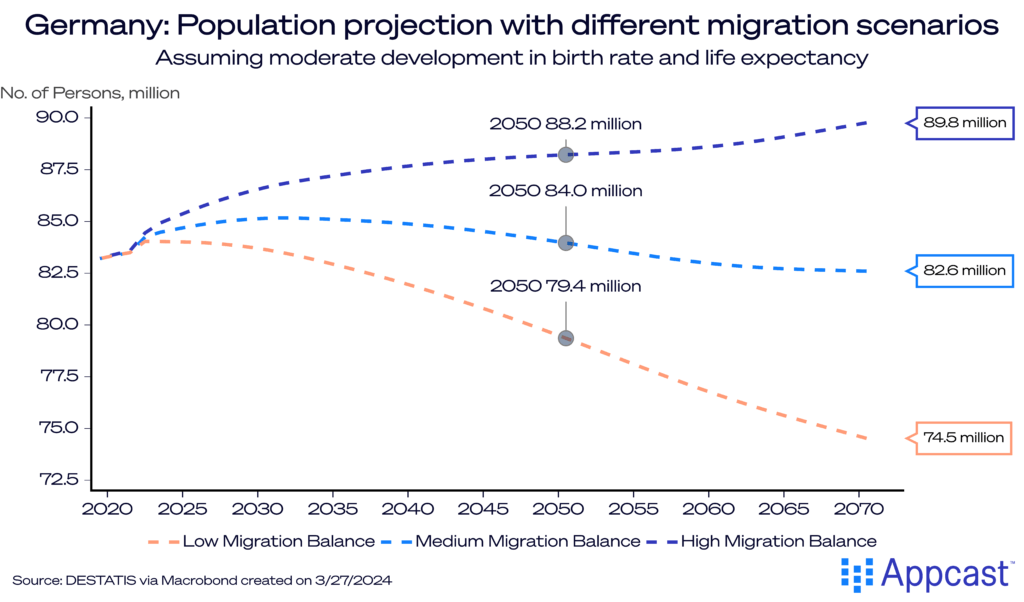A population time bomb has been heralded as imminent for many years. Proponents of the theory forecast steep and rapid declines in population levels. However, these forecasters have forgotten one of the three major variables that determine population size – and how difficult it is to predict.
Advanced economies have been facing adverse demographic developments for a long time
Those especially nervous of the time bomb’s ticks point to the declining fertility levels across advanced economies, already familiar in countries like Japan and Germany and creeping up in other advanced economies. Why the decline? The reasons for rapidly declining birth rates are multifaceted, but rising opportunity costs of motherhood play a substantial role. With female labor force participation increasing across OECD countries and women’s career opportunities expanding, it becomes increasingly costly for women to have children. Dropping out of the labor force not only reduces their current income temporarily, it threatens mother’s future incomes too. Countries that have more generous and affordable childcare and allow mothers to rejoin the labor force more easily also record higher birth rates.
Just look at Germany’s population pyramid: The median age in Germany in 2023 stands at 45 years-old (compared to about 38 years in the U.S. and 41 years in the U.K.). While this is particularly concerning, most other advanced economies are on their way to the German reality.

A rapidly aging society has many macroeconomic implications. It increases the fiscal burden because of rising entitlements (pensions) and higher healthcare costs. It also reduces the need for investments in infrastructure and the education sector. There is also evidence that older societies are less innovative, more conservative, and less risk-seeking in general. The following chart sums up the problem from a pension burden point of view. The old-age dependency ratio shows the ratio of elderly people compared to people of working age. While in the 1980s there were less than 25 elderly people per 100 people of working age, this number is expected to exceed 50 for Germany and 40 for the U.K. by 2050, thus posing large sustainability problems for pension systems.

Aging societies no more?
While the trend of shrinking populations in advanced economies has not stopped, it has definitely paused for now. The main reason is that net migration has turned out to be much higher than anticipated – and not just for popular immigration destinations like Australia and Canada.
Germany and the U.K. are two economies that have seen a much higher immigration flow over the last decades compared to previous trends. While the pandemic put a temporary dent into cross-border movements, net migration surged to a record high throughout 2022 and 2023. Germany received a record inflow of 1.4 million migrants in 2022 alone while the UK received more than 1.3 million in the two years from mid-2021 to mid-2023.
Underestimated population growth in the UK and Germany has ruined forecasts
There are three major variables that determine future population size: the birth rate, life expectancy, and net migration.
While all of these are subject to change, net migration is the one with the most uncertainty and subject to the largest fluctuations.
Life expectancy has obviously steadily increased in recent decades thanks to advances in healthcare, but it is generally a relatively slow-moving variable and therefore easier to forecast. Similarly, birth rates are to some extent influenced by domestic policies as well as by a changing population composition. Nevertheless, birth rates are also slow-moving and do not fluctuate substantially from year to year.
That leaves migration flows, which are dependent on a large number of international and domestic forces, so-called push and pull factors. The global context can change relatively quickly as wars and crises can suddenly push millions of people to leave their home countries – just look at the war in Ukraine. Similarly, sudden domestic policy changes like raising income thresholds for skilled worker and family visas in the U.K. can change the ease of immigrating to a particular country overnight.
The United Nations World Population Prospects (WPP) provides historical population forecasts. Looking at these past projections, one can see that they have missed the mark quite a bit, mostly because of a dramatic underestimation of the extent of migration inflows into some European countries. The effect has been particularly pronounced for the U.K. and Germany.
Back in 1994, it was assumed that the U.K.’s population would only marginally exceed 61.5 million by 2025. Subsequent population forecasts by the WPP have been revised upward by several million: The 2019 forecast suggests a population of 69 million by 2025! Even this is likely underestimated, as the U.K. is bound to reach that number this year.

Similarly, Germany’s population was forecasted to shrink from more than 81 million in 2000 to 76 million by 2025 as the number of deaths has been exceeding births for decades already. This forecast has also been revised upwards in every subsequent edition of the WPP, all because migration surprised on the upside. Thanks to the recent inflows, Germany’s population is now set to reach 85 million this year!

WPP projections from 1994 therefore missed the mark by close to 10 million people for the 2025 estimation.
Population forecasts are uncertain because of high immigration flows
There is a good chance that these population forecast errors will not go away any time soon. The reason is that the migration balance is by far the largest component influencing future population right now.
We can see this by looking at the results from the 14th Coordinated Population Projection conducted by the German statistics office in 2018.
The forecasts include different assumptions about future birth rates, life expectancy, and the annual migration balance. The different projections show that an increase in annual immigration inflows from by just 160,000 persons per year would increase Germany’s population by more than 8 million inhabitants by 2050, holding the other variables constant.


Changes in the birth rate and changes in life expectancy have a much smaller impact on future population growth, and sizeable short-run fluctuations in either variable are unlikely.
That leaves immigration inflows as the main unknown and with the most obvious impact on future population.
Not only has immigration to Germany dramatically increased in recent years, but it also rose by a larger amount than anticipated. Moreover, future immigration flows are also extremely uncertain and have become more volatile in general. While they are unlikely to remain as elevated as they have been recently, it is equally implausible that immigration flows will stop any time soon.
This all means that the uncertainty about future population growth will remain very high and that the forecasts errors will not improve any time soon.
What does that mean for the future of labor markets?
The population time bomb has been prophesized for many years. And indeed, advanced economies are aging rapidly while facing significant labor shortages since the pandemic.
However, population forecasts have been way too pessimistic in recent decades because they have underestimated immigration flows. With geopolitical conflicts on the rise and climate change being an issue, there are reasons to believe that immigration will remain high for the foreseeable future.
Governments in advanced economies are trying to restrict excessive inflows on the one hand while also realizing that on the other hand aging populations require more workers, especially in the care sector.
The main question going forward will be how economies and labor markets adapt to the higher inflow of people and whether they can become integrated into the workforce. While companies should play their part as well, governments need to assist and lay the regulatory frameworks.







